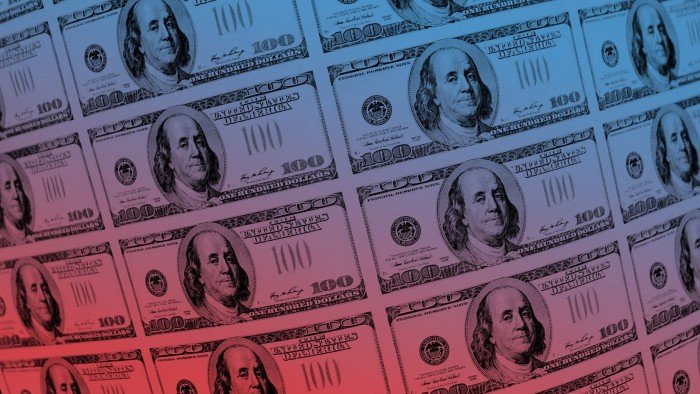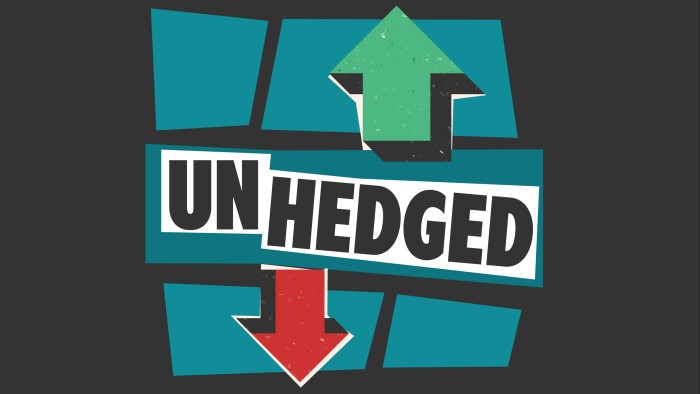What the dollar’s bad day shows

Unlock the Editor’s Digest for free
Roula Khalaf, Editor of the FT, selects her favourite stories in this weekly newsletter.
Good morning. You probably don’t need Unhedged to tell you that it was a very nasty day on Wall Street yesterday. The S&P 500 fell 5 per cent, with banks and tech taking an absolute whipping while hidey-hole sectors such as staples and healthcare rose. Treasury yields fell. A classic flight from risk, with some surprising wrinkles, such as a decline in gold. Below, we look at another move that caught us off-guard: the dollar’s big drop. Send us your thoughts: robert.armstrong@ft.com and aiden.reiter@ft.com.
The dollar’s bad day
US tariffs, the consensus story goes, push the dollar up. Tariffs lower demand for imports, resulting in fewer dollars getting swapped for foreign currencies. That decreases demand for euros, yen and the rest, and raises the dollar’s relative value.
On Wednesday, President Donald Trump announced the highest US tariffs in almost a century, and the dollar weakened thereafter. Yes, weird things happen on days like yesterday, when markets have to quickly rearrange the financial furniture after a major shock. But the 1.6 per cent tumble in the dollar index — the biggest one-day fall since 2022 — looks like the continuation, or acceleration, of a trend that began early this year. It’s important to understand what’s going on here:
There are a many possible explanations — and a few may be working in concert.
Markets may know there is more news coming on tariffs, and soon. Retaliation from the US’s trading partners is on the way. Trump may back off when pressed, as he has in the past. From Calvin Tse, head of US strategy and economics at BNP Paribas:
Our framework for foreign exchange [markets] going into today was that for new tariffs to have an impact, there were both size and duration elements to consider. Specifically, for the USD to materially rally, tariffs would have to be much larger than expected and also stay in place for a significant period. [Only] the first prerequisite has been fulfilled.
The second possibility is that the dollar’s decline is a result of falling Treasury yields relative to other sovereign bonds. The opportunity for arbitrage means that currencies follow rate differentials closely. But this can’t be the whole story, as James Athey of Marlborough Group pointed out to us. Look, on the far right in the chart below, how the dollar-euro exchange rate and the differential between the two-year bonds of the US and Germany came apart yesterday, with the dollar falling further:
Another possibility is that global investors, who have been very overweight US risk assets, have decided to cut back. The dollar selling that that requires could be outweighing foreign flows into Treasuries. This sort of rebalancing, Athey says, is “a huge (and I mean huge) risk because of the extent of foreign ownership of US assets, for equities in particular — foreigners own 18 per cent of the US equity market, and it was 7 per cent in 2000”. This makes intuitive sense on a day when many Wall Street economists increased their odds of a US recession this year.
Historically, however, there have been few if any cases of the US falling into a recession from which the rest of the world emerges unhurt. Trump’s tariffs will hurt the US economy; they will almost certainly hurt other economies more. And during times of global trouble, investors have tended to flock to the dollar and dollar assets as a safe haven (this is half of “the dollar smile”; the other half being when the dollar rises in boom times).
If risks to the world economy rise, and yet the dollar weakens, is the dollar’s special status eroding? From Thierry Wizman at Macquarie Group:
We know that this role of the USD as a ‘haven’ was already attenuating in the first quarter of 2025. That’s because the weekly gains of the dollar . . . had become more negatively correlated with weekly stock market performance . . . That’s a pattern we attributed to the associated loss of American exceptionalism under the push for a more ‘autarkic’ trade regime for the US.
Not everyone agrees with Wizman that a shift away from the dollar was already under way. “There is no evidence that money is leaving the US en masse,” said Michael Howell of CrossBorder Capital. “The [capital] flows data does not support that takeaway; at the end of February, there was no evidence of shifts out of the dollar. [Recent] moves in the dollar index are not sufficient to suggest there is a secular change away from the US.”
Unhedged will reserve judgment on the end of dollar exceptionalism. But there is another, less grand explanation for what is happening. Differences in the fiscal impulse in the US and other countries are clearly contributing to relative dollar weakness. The US is coming off years of economic outperformance, powered in part by massive fiscal stimulus. Under Trump and the Republicans, the amount of fiscal stimulus is likely to be lower. Meanwhile, China and Europe look set to crank up their spending.
We still have a lot to learn about the economic impacts of Wednesday’s tariffs. When Trump first shocked the world with tariffs back in 2018, we were living in a very different world, Manoj Pradhan of Talking Heads Macro points out:
At the time, there were two years to a presidential election, and there was every chance at that point that there would be six more years of a Trump administration . . . there was no inflation, less concern about deficits or debt sustainability, or questions around whether the Fed would continue to be on hold. This time around, we have levels of inflation that are worrisome [and] Trump has razor thin majorities in the House. Whatever retaliation you could have could impact growth, and there is a possibility that the midterms could really change things.
We’re in a new world. The dollar won’t be the last thing to surprise us.
(Reiter and Armstrong)
One good read
This seems like a violation of privacy but we are definitely buying the book.
FT Unhedged podcast

Can’t get enough of Unhedged? Listen to our new podcast, for a 15-minute dive into the latest markets news and financial headlines, twice a week. Catch up on past editions of the newsletter here.
Source link




